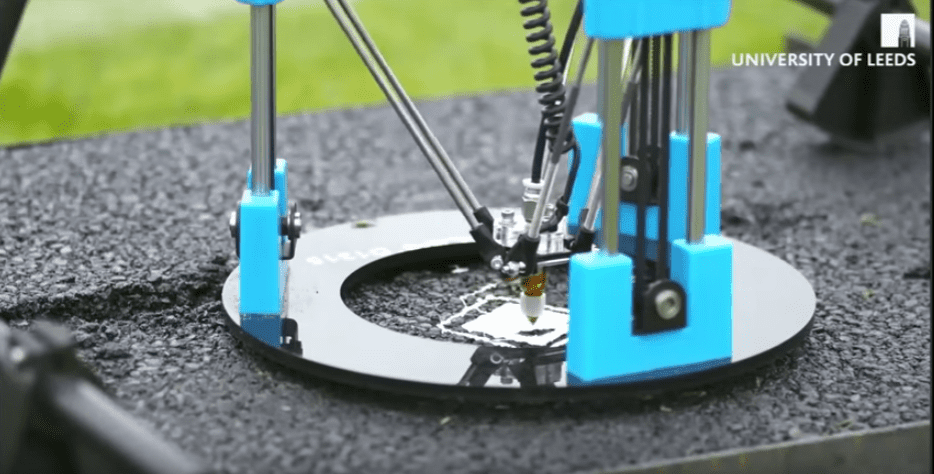Finally, it feels like we’re in the future!
https://youtu.be/mcK1xGfDWg0
If there’s one small thing all motorists hate, it’s potholes. Nothing can ruin your day like an inconspicuous, well-placed pothole — and often times, it takes forever to patch them up. But all that may soon change, thanks to a new futuristic invention by University of Leeds researchers, who have proposed and developed an unorthodox approach to pothole repairs.
They “trained” image recognition algorithms to detect potholes, and then installed them into drone cameras. After the damaged areas were identified, a drone was dispatched to the site, using an on-board asphalt 3D printer to patch the hole.
Intriguingly, while it may rightfully seem a bit overkill to use complex algorithms, drones, and 3D printers to patch potholes, researchers say this may actually save municipalities money in the long run. Phil Purnell, professor of Materials and Structures at the University of Leeds, told Digital Trends:
“When you look at interventions in infrastructure — whether it’s roads, pipes, bridges, or similar — you’re very often using ton and meter-scale solutions for problems that started out as gram and millimeter-scale defects,” he said.
Potholes often start out as small holes but can grow very quickly, and identifying and fixing them quickly can prevent a lot of costs further down the line. If the drone can reliably identify and patch things up, it might be very worth it.
Researchers University College London, who have built the asphalt extruder mounted on the Leeds drone, say that the patching has an accuracy of about 1 mm.
This is not a singular approach — it’s part of a multi-university project looking at the possibility of self-repairing cities, using robotics and modern technology to repair and maintain infrastructure.
While this all sounds incredibly cool and useful, it will still be a while before the technology actually hits the road, as this is only a proof of concept so far. But if you think about it, things that seemed sci-fi a few years ago are already becoming commonplace.
“From a technical view, this is like Formula 1,” he said. “Twenty years ago the idea of [technology such as] energy recovery through braking systems was something that was seen as exotic when it was used on Formula 1 cars. Now it’s commonplace in many hybrid vehicles that you can drive about on the road today. It’s the same thing here. This is all about demonstrating how we can glue the various pieces of this puzzle together. We’re academics, so it’s our job to look at the high concept approach. Through our interactions with industry, they’ll then be able to find ways of implementing it.”










